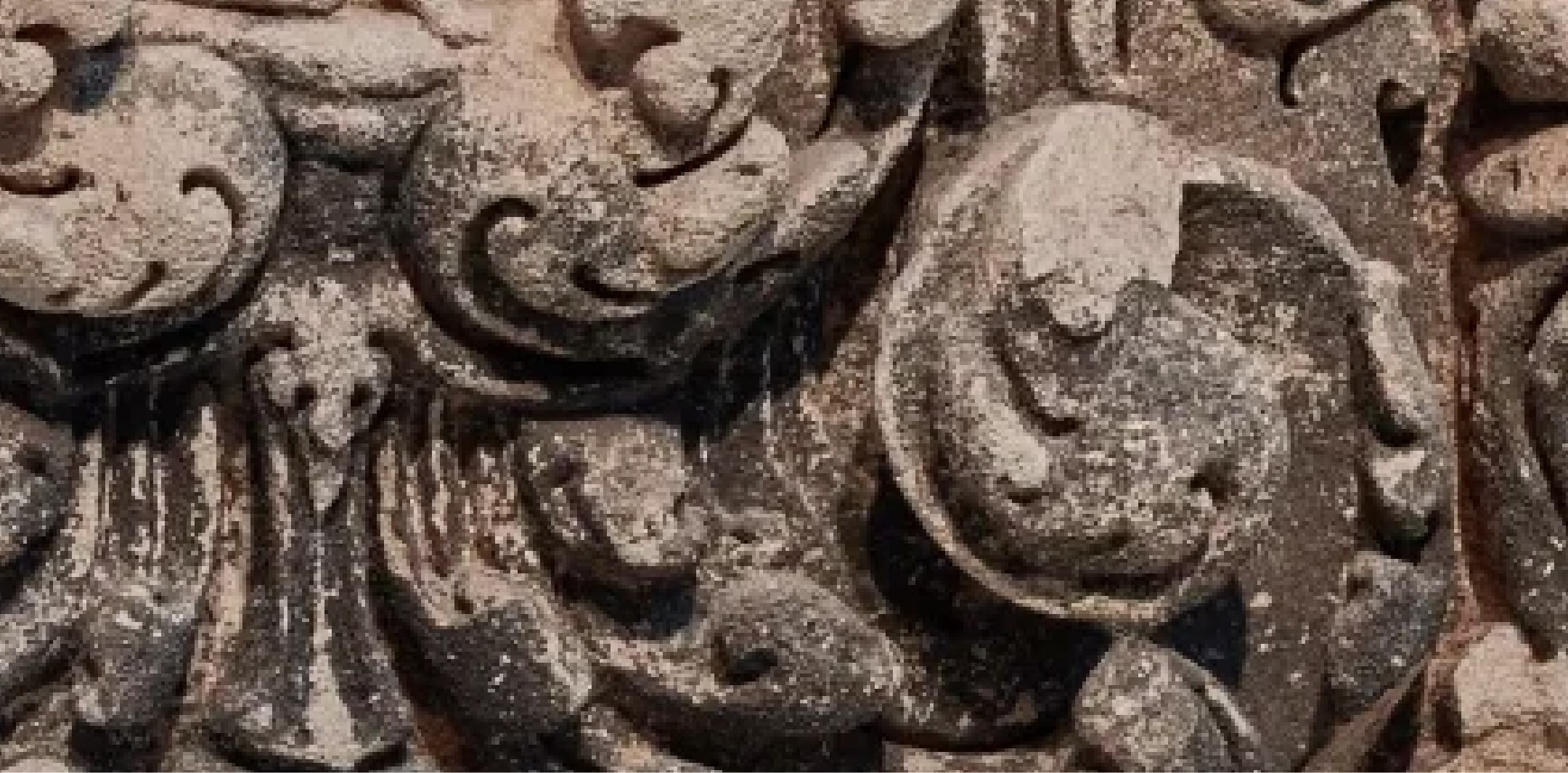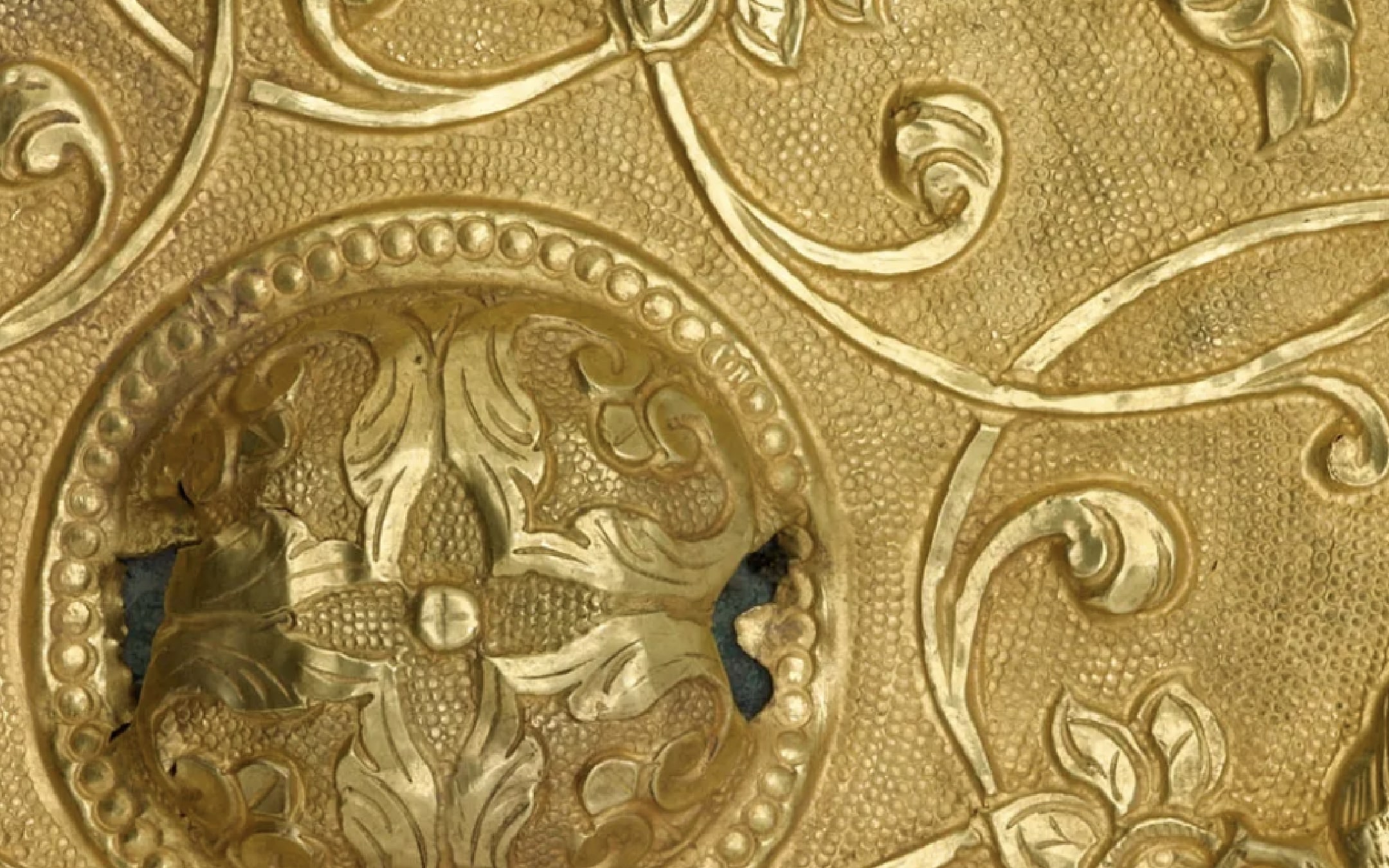Shah Jahan enthroned with Mahabat Khan and a Shaykh, from the late Shah Jahan Album

Terms of Use
Usage Conditions ApplyAt A Glance
-
Period
1629-1630 -
Geography
India -
Material
Opaque watercolor, ink and gold on paper, mounted on board -
Dimension
H x W (overall): 37 x 25.2 cm (14 9/16 x 9 15/16 in) -
Accession Number
S1986.406 -
EDAN ID
edanmdm:fsg_S1986.406
Object Details
-
Artist
'Abid (India, active 1604-1645) -
Court
Mughal Court -
School/Tradition
Mughal school -
Description
Detached folio from a dispersed copy of Padishahnama (the history of the first decade of Shah-Jahan's reign); Shah Jahan enthroned with Mahabat Khan and Shaykh; inscribed to Abid, brother of Nadiruzzaman of Mashhad; dated.Border: The painting is set in gold and black rulings followed by an inner frame of gold floral scroll and adorned with flowers in the margins, mounted on colored paperboard. -
Marks
Old matting, interior of front: round sticker, Henri Vever printed in dark blue and pencil, no 24Old matting, interior of front: Expos. Arts Mus. Le Haye 1927, square sticker printed in redOld matting, interior of front: Paris Expositions Douanes (customs sticker)Mounting, front: 9, written in pencilMounting, back: aspxx, written in pencilMounting, back: H Vever, written in pencilOld matting, exterior backing: Réception chez Chah Djehan XVII ͤ siècle, written in pencil, underlinedOld matting, exterior backing: written in pencil:•On lit au dessus du fronton du trône, dans un petit cartouche ovale : Chah Dejhan (ce cartouche est formé par une couronne d’or)•L’inscription qui se trouve au centre de la composition au dessous du tabouret d’or, est la signature de l’artiste = Abed (underlined), frère de Nadder-ol-Zeman, a terminé (cette peinture) en l’année … (date illisible sauf un 2)•Le deuxième personnage de droite en partant de l’empereur porte sur son bouclier l’inscription : portrait de Seiyed Mozaffer Khan.Old matting, exterior backing: Vever 298, written in pencilOld matting, exterior backing: Collection Henri Vever (underlined) Provenant du Recueil de Demotte, written in black inkOld matting, exterior backing: (as pxx), written in pencilOld matting, exterior backing: (as pxx), written in pencil -
Inscriptions
Below footstool, Ragam-i 'abed brathar-i Nadirzzaman-i Mashhadi dar seneh [2] be etmam resid.""By Abid, brother of Nadiruzzaman of Mashhad, completed in the year II [A.H. Shahjahani, A.D. 1629-30]."On shield to right, Shabih-i Seyyed Muzaffar Khan.On shield to right, Shabih-i Seyyed Muzaffar Khan. -
Provenance
?-1910Georges Demotte (1877-1923), method of acquisition unknown [1]1910-1942Henri Vever (1854-1942), purchased from Georges Demotte [2]1942-1947Jeanne Louise Monthiers (1861-1947), bequest of Henri Vever [3]1947-1986Francois Mautin (1907-2003), bequest of Jeanne Louise Monthiers and Henri Vever [4]From 1986Arthur M. Sackler Gallery purchased from Francois Mautin [5]Notes:[1] This work is likely one of a group of seven miniatures that Henri Vever purchased from Demotte in January 1910. Vever describes the group as "7 miniatures indo-persanes." See Henri Vever Account Ledger, January 1910, FSA A1988.042.2, from Henri Vever Papers. Freer Gallery of Art and Arthur M. Sackler Gallery Archives. Georges Demotte was a collector and dealer of Islamic and medieval European art. He had galleries in Paris and New York City.[2] An accomplished French jeweler and collector, Henri Vever (1854-1942) amassed a large and impressive collection of works of art during his lifetime. His holdings in Japanese prints and Islamic arts of the books, especially from Iran and India, were among the most important assembled in the early twentieth century. This object was in Vever's collection at the time of his death in 1942.[3] Upon Henri Vever's death on September 25, 1942, his wife, Jeanne Louise Monthiers inherited the object. See exhibits F and G of Agreement of Purchase and Sale of the Henri Vever Collection, January 9, 1986, copy in object file.[4] Upon the death of Jeanne Louise Monthiers, as stipulated in the will of Henri Vever, the family's assets were divided evenly between his two grandchildren. His only grandson, Francois Mautin inherited the collection known as "The Henri Vever Collection of Oriental Art and Manuscripts Including Persian and Indian Art and Manuscripts." This object is part of that collection. See exhibits F and G as cited in note 3.[5] The Arthur M. Sackler Gallery purchased the entirety of the collection from Francois Mautin on January 9, 1986. See purchase agreement, copy in object file.Research updated June 6, 2023. -
Collection
Arthur M. Sackler Collection -
Exhibition History
Rembrandt and the Inspiration of India (March 13 to June 24, 2018)Imperial Portraits from the Mughal Courts from the Arthur M. Sackler Gallery, Smithsonian Institution (June 30 to September 22, 2002)The Jewel and the Rose: Art of Shah Jahan (May 4, 1997 to January 25, 1998)Arts of Mughal India (1992) (May 24 to December 6, 1992)A Jeweler's Eye: Islamic Arts of the Book from the Vever Collection (November 20, 1988 to April 30, 1989)Persian and Indian Painting - Selections from a Recent Acquisition (September 28, 1987 to February 28, 1988) -
Previous custodian or owner
Francois Mautin (1907-2003)Jeanne Louise Monthiers (1861-1947)Henri Vever (1854-1942)Georges Demotte (1877-1923) -
Origin
India -
Credit Line
Purchase — Smithsonian Unrestricted Trust Funds, Smithsonian Collections Acquisition Program, and Dr. Arthur M. Sackler -
Type
Manuscript -
Restrictions and Rights
Usage Conditions Apply
There are restrictions for re-using this media. For more information, visit the Smithsonian's Terms of Use page.
The information presented on this website may be revised and updated at any time as ongoing research progresses or as otherwise warranted. Pending any such revisions and updates, information on this site may be incomplete or inaccurate or may contain typographical errors. Neither the Smithsonian nor its regents, officers, employees, or agents make any representations about the accuracy, reliability, completeness, or timeliness of the information on the site. Use this site and the information provided on it subject to your own judgment. The National Museum of Asian Art welcomes information that would augment or clarify the ownership history of objects in their collections.
Keep Exploring
-
Related Resources
-
Date
-
Name
-
Place
-
Topic
-
Culture
-
Object Type

